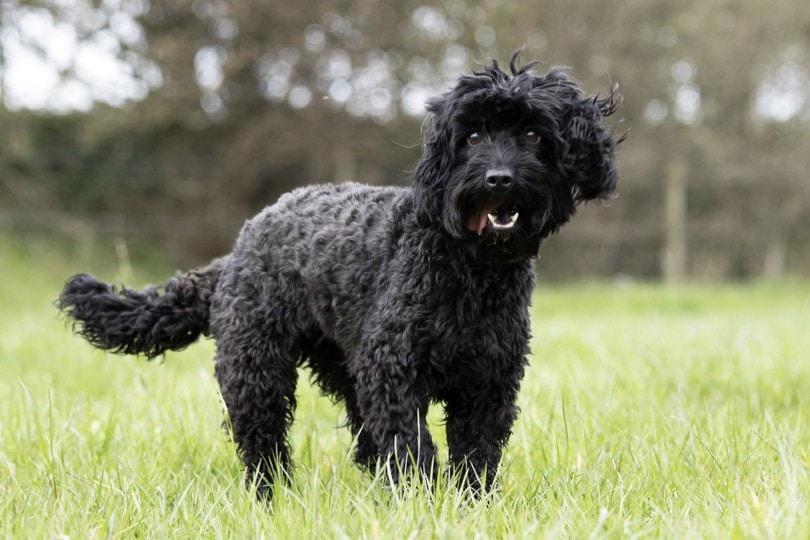Impulse Control Games for Dogs: 6 Ideas

Updated on
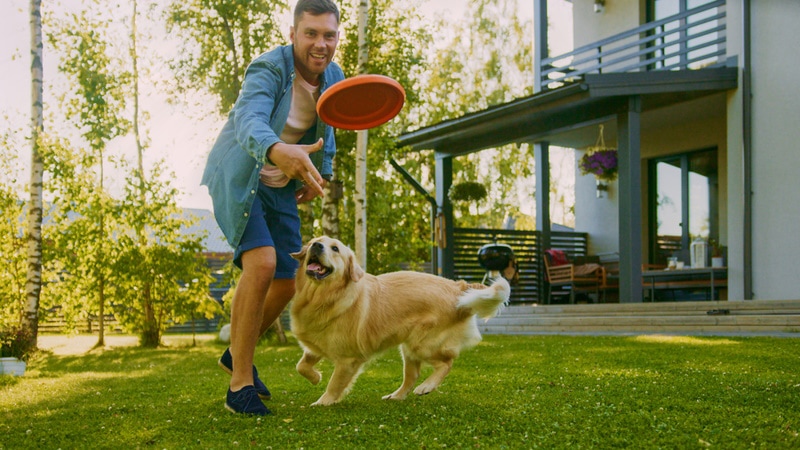
Are you tired of dealing with your dog’s impulsive behavior? Looking for fun and interactive ways to train your furry friend while keeping them entertained? Well, you’re not alone.
In this article, we’ll explore the world of impulse control games designed specifically for dogs. Never heard of them? Keep reading to learn more about these games in addition to a list of compiled interactive impulse control game options that are worth considering. Whether you have a high-energy puppy or a mature dog, these games are suitable for dogs of all ages and breeds.
What Exactly Are Impulse Control Dog Games?
Impulse control games for dogs are activities and exercises that help dogs learn to manage their impulses and make better choices. These games are designed to teach dogs self-control, patience, and the ability to resist immediate gratification. One popular impulse control game is the “wait” game, where the dog is taught to wait patiently before getting what they want, such as a treat or a toy.
Another game is the “leave it” game, where the dog learns to ignore or leave something tempting, like a piece of food on the ground. These games not only help dogs behave better, but they also provide mental stimulation and strengthen the bond between dogs and their owners.
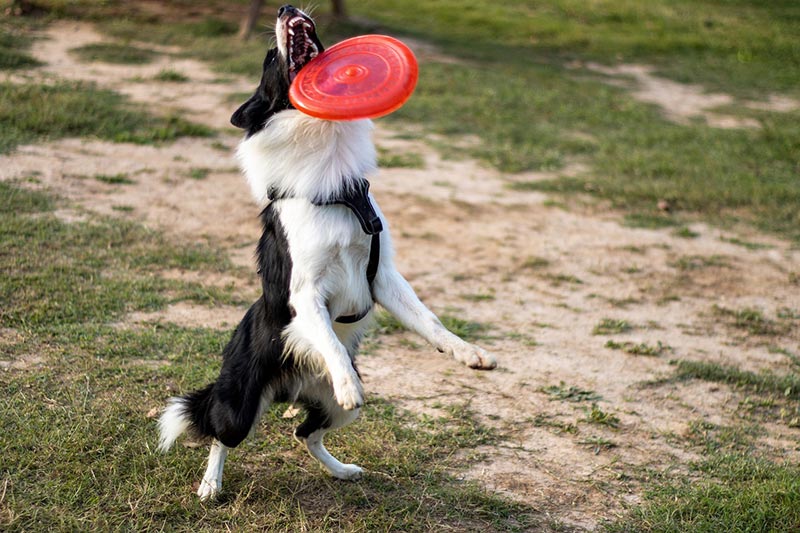
The 6 Impulse Control Games for Dogs
1. Find It
“Find it” is a fun and engaging game that taps into your dog’s natural scent-tracking abilities. This game helps improve your dog’s impulse control by teaching them to wait patiently and resist the temptation to snatch the hidden treat immediately. Not only does it provide mental stimulation, but it also reinforces the “wait” command.
To play “Find it,” start by having your dog sit or stay in one area while you hide a treat in plain sight. Use a simple command like “find it” or “search” to release your dog from their position and encourage them to search for the treat. Initially, you may need to guide them towards the treat, but as they get the hang of it, you can gradually increase the difficulty by hiding the treats in more challenging spots.
Make sure to praise and reward your dog when they find the treat. This positive reinforcement will reinforce the desired behavior and motivate them to continue playing the game. Over time, your dog will learn to wait patiently for the command before searching for the hidden treats, improving their impulse control and focus.
2. Leave It
This game is a rather important command that can keep your dog safe and prevent them from picking up harmful or inappropriate items. This game also helps develop your dog’s impulse control by teaching them to ignore or resist the temptation of objects they desire. Believe it or not, it can be a lifesaver in situations where your dog encounters something potentially dangerous, such as a snake or a toxic food or plant. To play this game, start with a low-value item, such as a toy or treat, and hold it in your closed hand.
Then allow your dog to sniff or paw at your hand, but don’t release the item just yet. Use a firm but calm voice to command “leave it” and wait for your dog to back away or lose interest in the item. As soon as they do, reward them with a treat from your other hand and praise them for their self-control.
Gradually increase the difficulty by using higher-value items or placing the treat on the ground. With consistent practice and positive reinforcement, your dog will learn to resist temptation and respond to the “leave it” command effectively. This game not only improves their impulse control but also reinforces their trust in you as their owner.
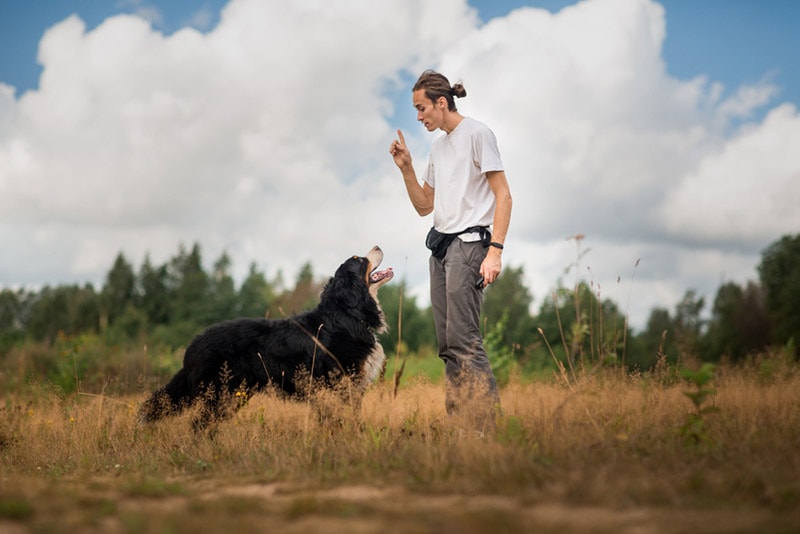
3. Tug of War
Contrary to popular belief, playing tug of war can actually be a beneficial game for dogs when played correctly. It can help teach your dog self-control and improve their impulse control. The key is to establish rules and boundaries during the game to ensure it remains safe and controlled. Start by selecting a sturdy tug toy (like a braided rope) and teaching your dog the “take it” and “drop it” commands. Next, encourage your dog to grab onto the toy and engage in a gentle tug. However, as soon as you give the command “drop it,” your dog should release the toy.
This teaches them to listen to your commands and exhibit self-control. Be sure to establish rules and boundaries, such as not allowing your dog to grab the toy until you give the command. This helps reinforce the idea that they need to wait for your signal before engaging in the game. By practicing this game regularly, you can gradually teach your dog self-control and improve their overall impulse control.
4. Puzzle Toys
These toys are really popular with all dog breeds and are a fantastic way to engage your dog’s mind and provide mental stimulation. These toys require your dog to problem-solve and use their cognitive abilities to access hidden treats or toys. By engaging in puzzle games, your dog learns to focus, exhibits patience, and resist those natural impulsive behaviors.
There are various types of puzzle toys available on the market, such as treat-dispensing toys, puzzle feeders, and interactive games. Start with a simple puzzle toy and gradually increase the difficulty as your dog becomes more proficient. Encourage your dog to explore and manipulate the toy to access the hidden treats or toys.
Puzzle toys can be especially beneficial for high-energy dogs or dogs prone to destructive behavior. The mental exercise they provide can tire your dog out and redirect their energy towards a productive activity.
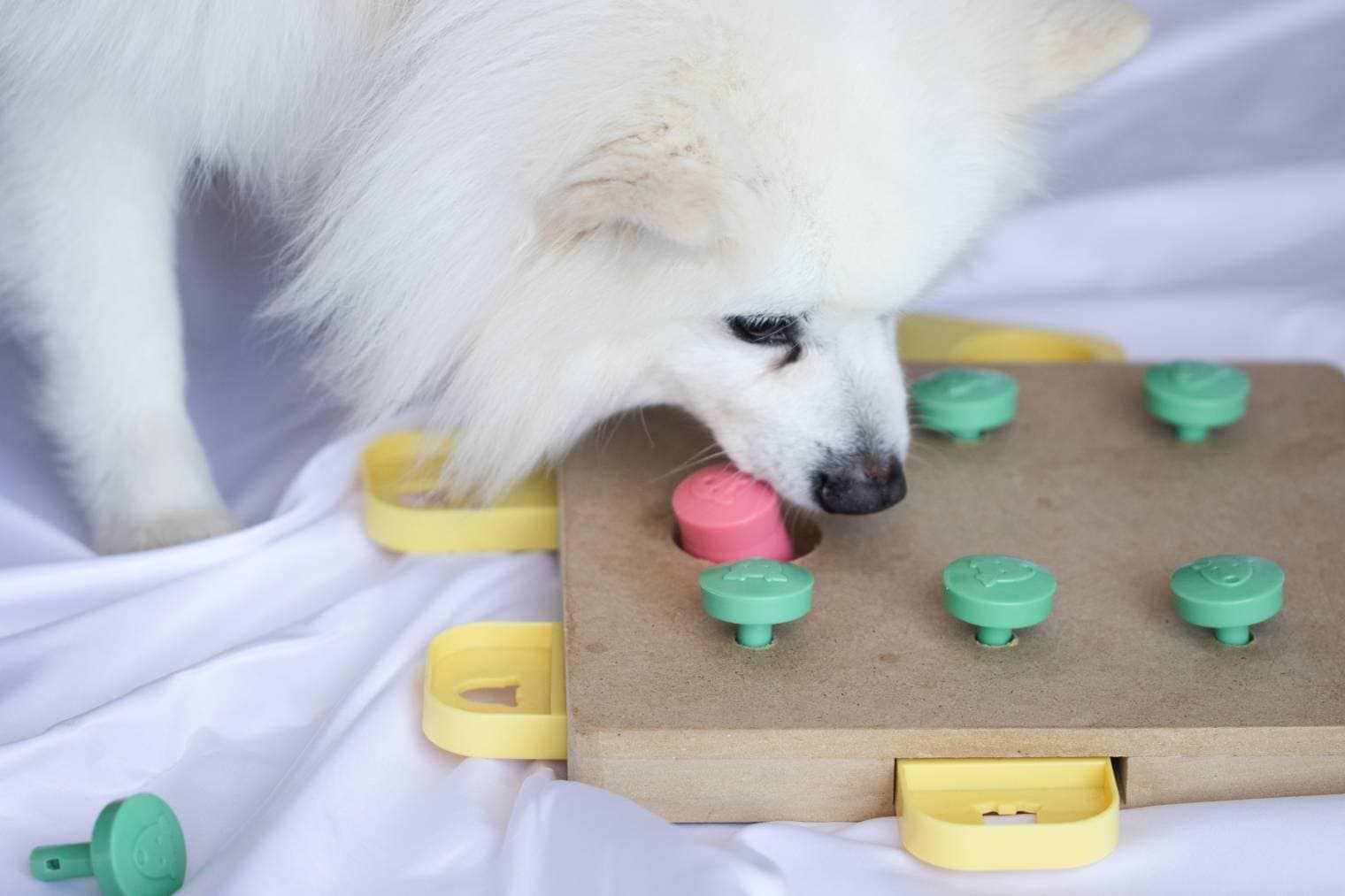
5. Obstacle Course
Creating an obstacle course for your dog isn’t only a great way to provide physical exercise but also an opportunity to work on their impulse control and obedience. An obstacle course can be set up in your backyard or in a designated area indoors, depending on the available space.
Start with simple obstacles, such as jumps or tunnels, and guide your dog through each one using commands like “jump” or “through.” As your dog becomes more comfortable, do the same thing, but gradually increase the difficulty by adding more complex obstacles or requiring them to wait at certain points before proceeding.
These games help build your dog’s focus, discipline, and impulse control. They learn to wait for your commands, follow directions, and exhibit self-control. Additionally, an obstacle course provides an outlet for your dog’s energy and engages their mind, making it an excellent game for overall behavior management.
6. Red Light, Green Light
“Red light, green light” is a classic (and one of the oldest) games that can be adapted for dogs to practice impulse control. This game helps teach your dog to stop and wait until they receive the command to proceed. It’s a valuable skill that can be applied in various real-life scenarios, such as crossing the road or waiting at the door.
Start by designating a starting point and a finish line. Use a command like “green light” to signal your dog to start moving towards the finish line. As soon as you say, “red light,” your dog should stop and wait until you give the command to proceed again. Repeat this process, gradually increasing the distance between the starting point and the finish line.
This game is the game version of your typical obedience command such as “come”, “heel”, and “stay”. It reinforces your dog’s ability to follow commands and exhibit self-control. It teaches them to stop and wait, even when they are super excited or eager to move forward.
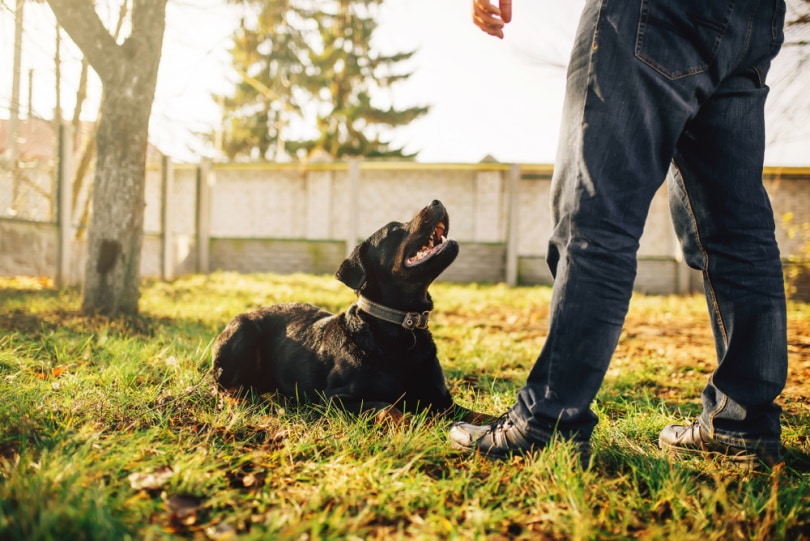
Why Do Some Dogs Have Impulse Control Issues?
Impulse control refers to a dog’s ability to resist immediate gratification or impulses in order to follow commands or behave appropriately. Dogs with poor impulse control may exhibit behaviors such as jumping, pulling on the leash, or stealing food from the counter.
Impulse control issues in dogs can stem from a variety of factors. One possible reason is genetics. Certain breeds are more prone to impulse control issues than others. For example, dogs with high energy levels, such as Border Collies or Australian Shepherds, may struggle with impulse control due to their natural inclination to be constantly active and stimulated.
Also, dogs that haven’t been properly trained or socialized may also exhibit impulse control problems. Lack of consistent discipline and boundaries can lead to a dog developing impulsive behaviors, as they haven’t really learned how to control their urges.
And lastly, certain medical conditions or imbalances in brain chemistry can also contribute to impulse control issues in dogs. It is important for owners to understand these factors and work with professionals to address and manage these problems effectively.
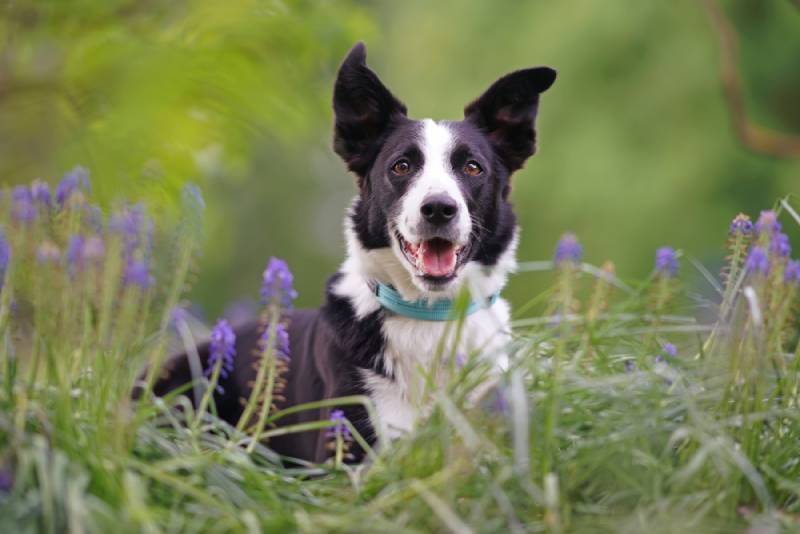
The 5 Tips for Successful Game/Training Sessions
To ensure successful training/game sessions and maximum results, consider the following tips.
1. Consistency
Consistency is key when it comes to training your dog. Set aside regular training sessions and stick to them. Canines thrive on routine, and consistent practice helps reinforce desired behaviors. It also helps to incorporate your dog’s feeding or potty schedule into your training. For example, make sure that your dog is well-fed and not due for a potty break during the training, as this can cause them to be too distracted to follow your commands.
2. Positive Reinforcement
Use positive reinforcement techniques, such as treats, praise, and play, to reward your dog for exhibiting the desired behavior. This encourages them to continue engaging in the games and reinforces their impulse control. Never use negative reinforcement with your dog as it can have the opposite effect of what you want – in short, it can be super discouraging for your pup.
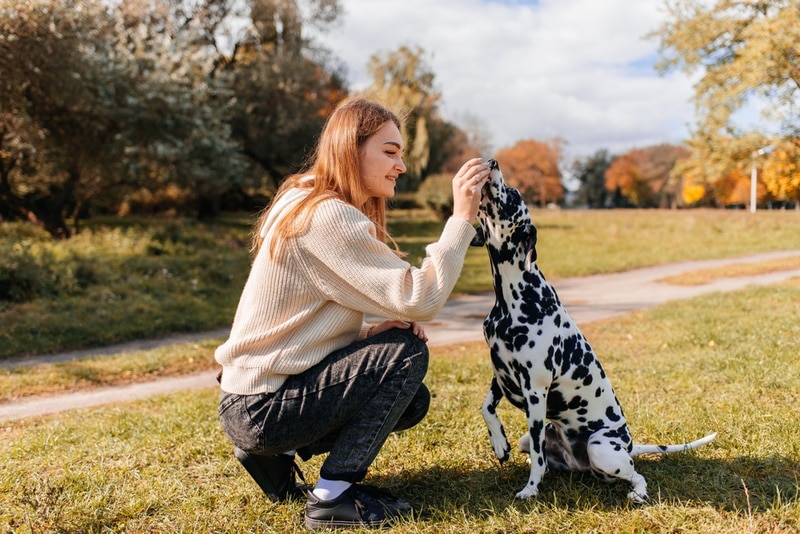
3. Do Short and Frequent Training Spurts
Dogs have short attention spans, so keep these sessions short and really frequent – this will help reinforce the training in their memory and prevent them from becoming bored or overwhelmed. Aim for anywhere between about 7 and 15 minutes per session and do this several times a day. Keep in mind that you’ll likely need to practice training over several weeks and even months for your dog to really get more complicated commands and games down.
4. Gradual Progression
Take it easy on your pup. Remember that they can only absorb so much at a time. Always start with easier games and gradually increase the difficulty as your dog becomes proficient. This prevents frustration and ensures a positive learning experience for your dog.
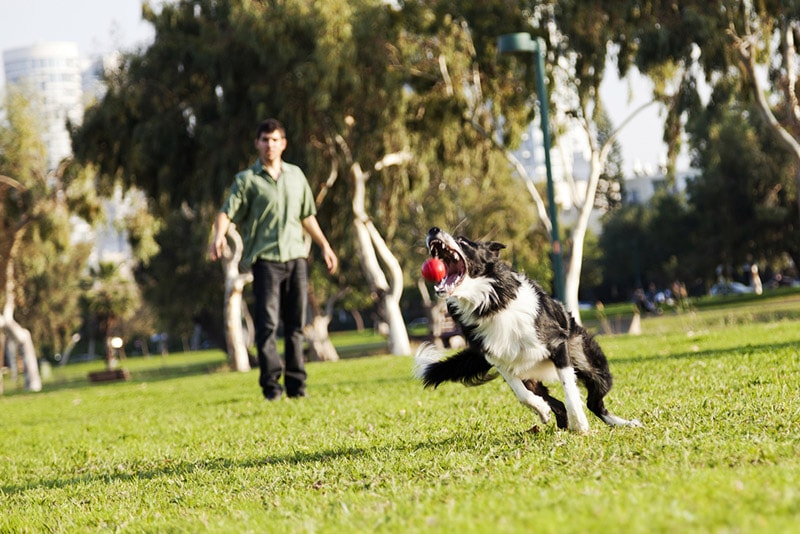
5. Be Patience but Persistent
Training takes time and patience. Be patient with your dog and celebrate small victories along the way. Remember that each dog learns at their own pace, and consistency and persistence will pay off in the long run.
FAQs About Dog Impulse Control
Why does my puppy keep biting my fingers?
This is a common complaint from new puppy owners. Puppies are naturally curious and playful, and one common behavior they exhibit is biting. When a puppy bites your fingers, it’s often a sign of teething or exploration. Just like human babies, puppies go through a teething phase where their teeth are growing and causing discomfort. Biting on objects, including fingers, helps to alleviate this discomfort. In addition, puppies use their mouths to explore their surroundings and learn about their environment. They may bite your fingers out of curiosity or to get your attention. You can simply redirect this behavior by providing appropriate chew toys and teaching them bite inhibition. Consistent training and patience will help your puppy understand that biting fingers isn’t ok to do.
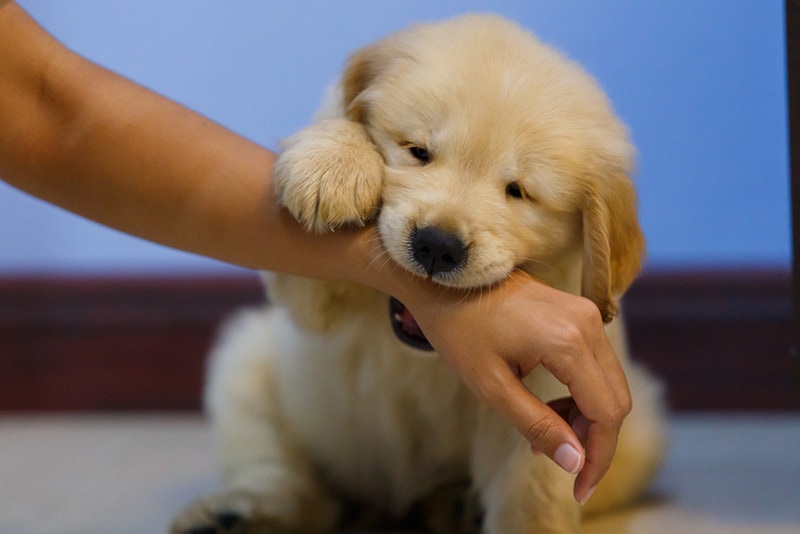
How to stop my dog from jumping on people?
One effective way to stop your dog from jumping on random people is through consistent training and positive reinforcement. Start by teaching your dog the “sit” command and reward them with treats and praise when they obey. Gradually introduce distractions, such as having a friend walk by, and continue to reinforce the command. Additionally, it’s important to socialize your dog properly so they become comfortable around strangers. You can also enroll in obedience classes or consult a professional dog trainer for further guidance on how to address this issue. It’s best to discourage this behavior when dogs are young pups.
How to keep my dog from running off when I take the leash off?
When it comes to keeping your dog from running off when you take the leash off, there are a few strategies you can try. To stop this, it’s best to establish a strong “come” command with your dog. This means training them to come to you when called, even when they’re off-leash. Consistent practice and positive reinforcement can help reinforce this action. That’s really the best and most recommended way to teach your dog to stay when the leash is off – something that you can start teaching in the comfort of an enclosed backyard or other area.

Wrapping Things Up
Interactive impulse control games are a wonderful tool for dog training. Not only do these games provide a fun and engaging experience for your pup, but they also serve as an effective way to train them. Through these games, dogs learn to control their impulses and exhibit appropriate behavior.
Also, the mental stimulation provided by these games helps keep your dog’s mind active and engaged, preventing boredom and destructive behaviors – like tearing up your Crocs when you’re at work. Lastly, participating in these games together strengthens the bond between you and your pup, as you both work together towards a common goal – and besides, they can be really fun.
Featured Image Credit: Gorodenkoff, Shutterstock


